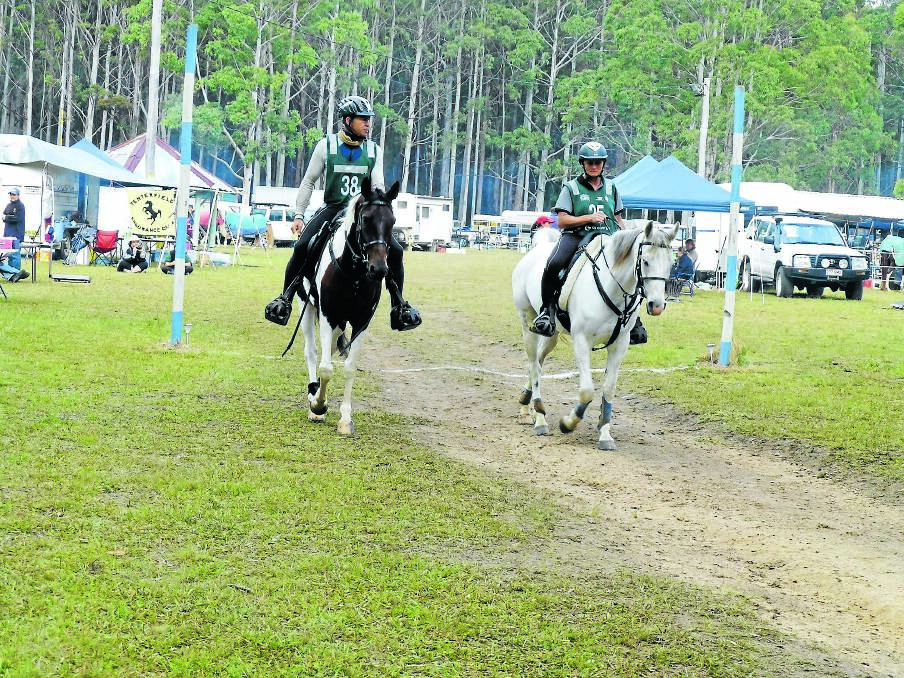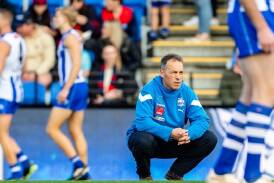FOR the Tenterfield Endurance Riders Club, the weekend of May 4-5 was a big one.
Subscribe now for unlimited access.
$0/
(min cost $0)
or signup to continue reading
It was the 27th consecutive ride the club has staged.
The 210 horses, riders and supporters crammed into our Girard State Forest base and tested our resources, not to mention our plumbing and water supplies, and our ability to organise and manage a ride of this magnitude
It was the second biggest endurance ride held in Australia this year.
Despite several campers managing to spear the underground water pipes with star droppers, and the huge demand on the hot water boiler and our plumbing, the “maintenance crew” managed it all with quiet aplomb.
Then there was the matter of finding, five or six veterinarians and technical support people required for a ride of this magnitude.
The administrative and technical people who kept track of the progress of each horse and rider from 3am to the last rider later in the day.
Time-keepers, pencillers, radio communications people, caterers, gate sitters, check point staff, rescue float drivers to stand-by in case of mishaps on track, water pump operators, tea ladies, and track markers who had to mark and maintain over 100km of track for two consecutive days.
But it was all done, as these things are in Tenterfield, by a band of cheerful volunteers who came from everywhere, some of who had little sleep between Friday afternoon and Sunday night.
Tenterfield mayor Peter Petty and his wife Kate came down to the ride base on Saturday night to welcome riders to the shire and happily tuck into what Cr Petty called a really tasty dinner.
Cr Petty promised to lend his support to any application by the club for future funding to further develop our already remarkable ride base.
The weekend also marked the 25th time John Brown has acted as our chief treatment veterinarian which says a lot for John.
The Saturday 40km training ride and shorter introductory rides went without a hitch and then it was the big one.
In the wee hours of Sunday morning, the headlamps of 140 riders lit up the night as excited horses circled the grounds waiting for the 3am start of the 100km ride.
The wail of the vuvuzela (plastic horn) signalled the start and they were off on the first leg, a tough 40km circuit in the dark that included a long climb up onto the Timbarra plateau.
The day progressed with groups of rider clattering into camp, an anxious wait while horses were cooled, rubbed down and vet-checked and then out on another leg.
There is always some attrition as horse welfare is paramount and the vets will rule out any horse with the slightest hint of possible problems, but at 85 per cent, the completion rate was high.
This year there was a very good field of horses and riders and some of the ride times were extremely competitive.
However, the motto of the sport is that “to complete is to win”, and late in the afternoon, the last rider in, a young girl on her weary but much-loved horse, received just as many cheers as the front runners who crossed the 100km finishing line far earlier in the day in a riding time of just under six hours.
And perhaps as a sign of the sort of people who follow endurance riding, if you chanced to drop into the ride base in the forest a few days after the ride was over, you would have been able to picnic in a peaceful forest setting.
There would have been no rubbish, no litter; the only sign that just a few days previously the area had been alive with people, rigs, and horses would be a few patches of slightly tired grass and an occasional mound of horse manure, heaped and ready to be taken away by keen gardeners. That is until next year.
As a postscript, several club members with good recovery rates headed down to Manilla the following weekend where Caroline Combe crossed the line first in the light weight division of the 85km ride, and Michael came in a very respectable fifth in the middle weight.
The next event of note is the prestigious 160km Quilty to be held at Kilkeven in Queensland, an event that attracts riders from all over the country. Good luck to all club riders who will be there.






